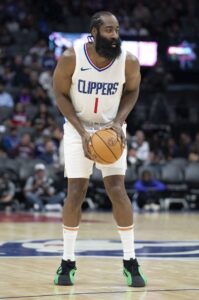Less than an hour after it was reported on Friday that Darius Garland is expected to miss at least a month due to a fractured jaw, word broke that Evan Mobley would undergo knee surgery, which will sideline him for roughly six-to-eight weeks.
It was a crushing one-two blow for the Cavaliers, as Chris Fedor of Cleveland.com (subscription required) writes. Head coach J.B. Bickerstaff said that the team “felt like s–t,” while Dean Wade said it “sucks” to see two key starters go down with injuries. However, the club is determined to remain competitive without Garland and Mobley in its lineup.
“Injury is a part of the game. But you hate to see it. Hate to see with two guys who continuously put the work in to get better and those guys have been working their butts off,” Donovan Mitchell said. “On the flip side, and I think these two will feel the same way, no one’s going to care outside of this locker room. You know what I mean? If anything, teams are going to want to try to come at us even more. I think that’s what kind of brings us together. We have to go out there and hold it down for these two. They’re our rocks. They’re part of what we built.”
“I knew that our team could do it,” Jarrett Allen said of overcoming the two injuries. “We always rely on the next guy to be ready to come in and make an impact.”
The Cavaliers got off to a good start on Saturday in their first game without Garland and Mobley, defeating the Hawks by a score of 127-119.
“I think we just came together,” Wade said. “Everyone likes each other. When things like this happen, adversity comes and hits us, I think we get closer. We still got a lot of weapons, a lot of talent in this room. Even with those guys out, we can still get the job done. What D.G. and Evan bring to the floor, we just had to do a little extra.”
Here’s more out of Cleveland:
- In deciding on a new lineup, the Cavaliers opted to slide Mitchell to point guard and Max Strus to shooting guard, with Isaac Okoro and Wade entering the starting five at small forward and power forward, respectively. As Fedor explains, undrafted rookie Craig Porter Jr. isn’t considered quite ready for a starting job and the Cavs seem committed to keeping Caris LeVert in a sixth man role.
- When Joe Vardon of The Athletic tried to ask Mitchell on Saturday about his contract situation and his long-term future in Cleveland in light of the Garland and Mobley injuries (and the Cavs’ up-and-down play this season), the star guard cut him off. “My job is to focus on this,” Mitchell said. “We have two guys that are out, so I’m not answering anything. And no disrespect. I appreciate that you have to ask the question, but I’m not going there with any of those questions. My focus is on these guys being out, us trying to find a way to get wins.”
- Mitchell thrived in his first game in place of Garland at point guard, handing out a career-high 13 assists. Mitchell also scored a career-high 71 points last season in a game Garland missed, but the former Jazz star said it’s “damn sure not easier” to play without his usual backcourt mate. “I have to pick up the slack that’s there,” Mitchell said. “When he’s not there, it’s my job to go out there and fill that void. He’s an All-Star guard. We came here and made this for us to be together. It’s definitely not an, ‘Oh, it’s me versus him.’ That’s my brother. That’s my dog. … The only way we make this push is as a group. I can’t do everything. It doesn’t happen with just one of us.”
- Keith Smith of Spotrac takes a look at some options out there for the Cavaliers if the team decides it wants to add roster reinforcements via free agency or trade. As Smith notes, adding a free agent would push Cleveland’s team salary over the luxury tax line, but if that player receives a non-guaranteed contract and is waived on or before January 7, the club could sneak back out of the tax.
 The injury occurred in the first quarter as Beal rolled the ankle when he landed on the foot of Knicks guard
The injury occurred in the first quarter as Beal rolled the ankle when he landed on the foot of Knicks guard  One good recent example of salary aggregation came when the Clippers
One good recent example of salary aggregation came when the Clippers